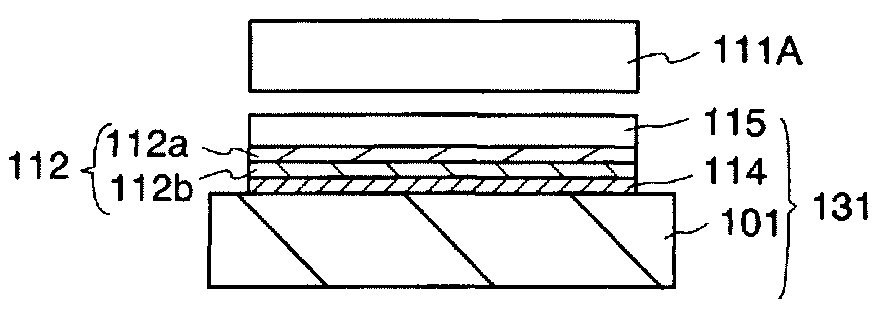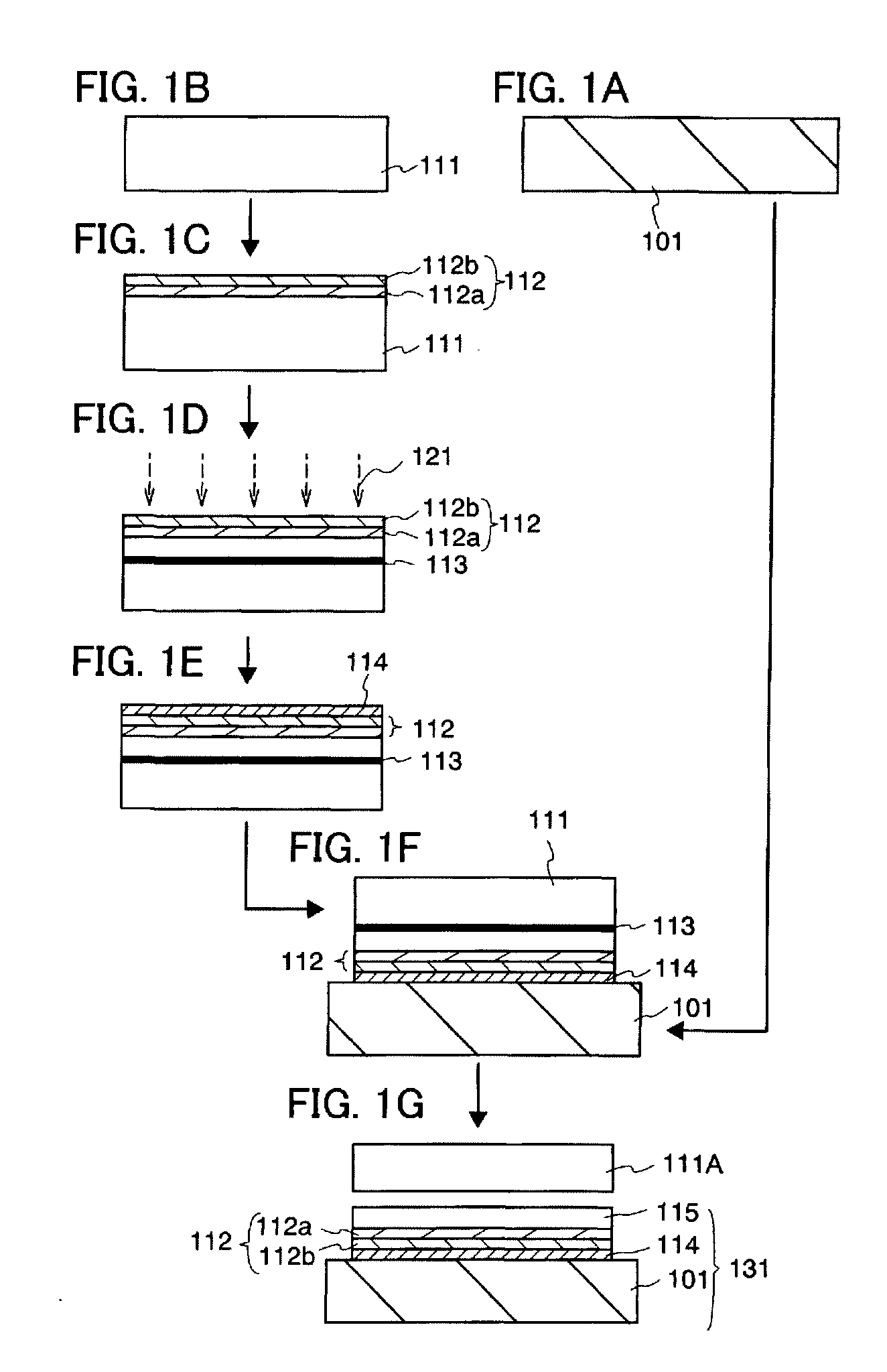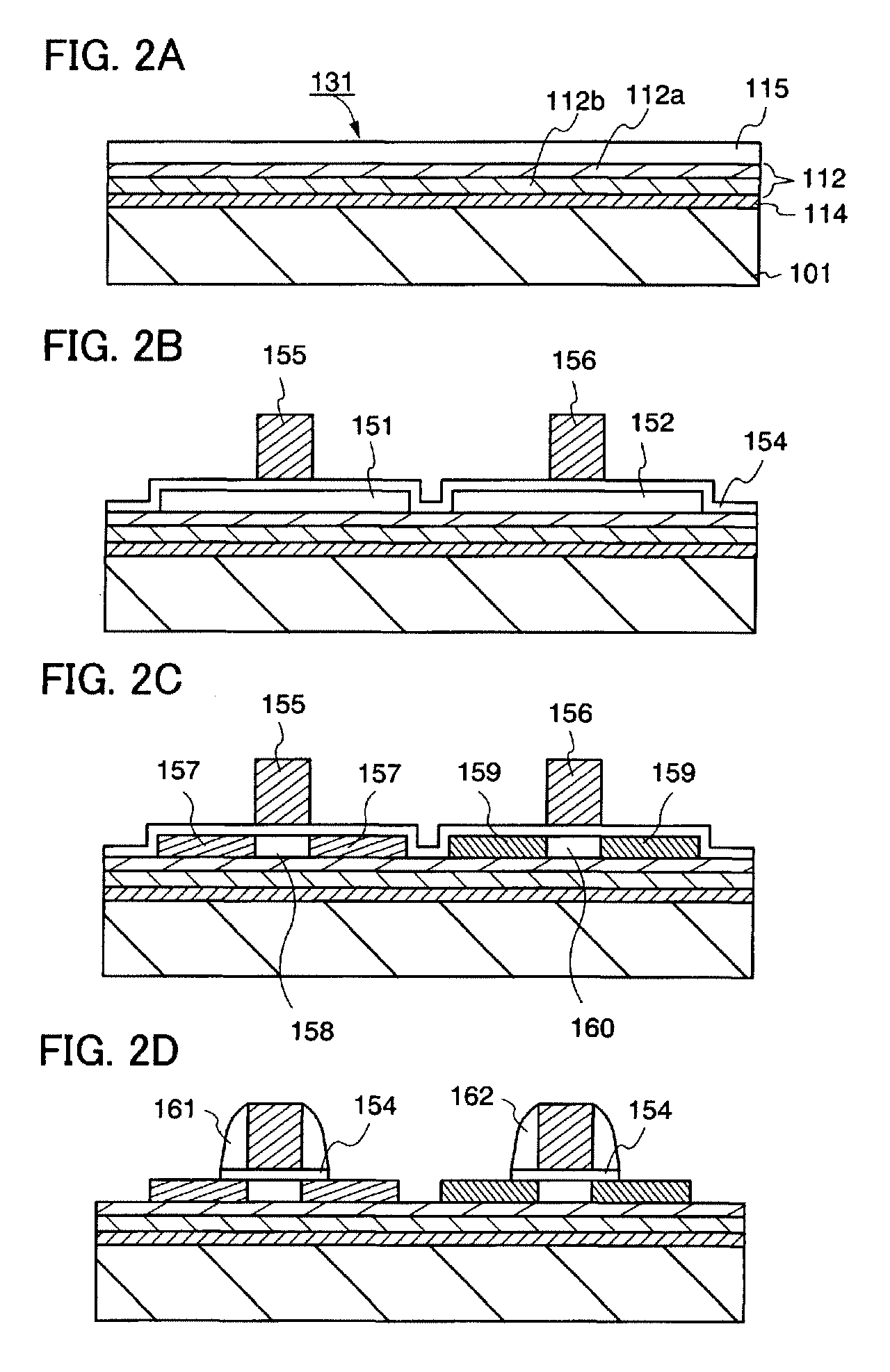Method of manufacturing semiconductor device
- Summary
- Abstract
- Description
- Claims
- Application Information
AI Technical Summary
Benefits of technology
Problems solved by technology
Method used
Image
Examples
embodiment mode 1
[0043]This embodiment mode will explain a method of manufacturing an SOI substrate, and a method of manufacturing a semiconductor device with the use of the SOI substrate. First, a method of manufacturing an SOI substrate will be explained with reference to FIGS. 1A to 1G
[0044]A base substrate 101 is prepared as shown in FIG. 1A. The base substrate 101 is a support substrate which supports a semiconductor layer divided from a semiconductor substrate. As the base substrate 101, a light-transmitting glass substrate which is used for an electronic product such as a liquid crystal display device can be used. In consideration of heat resistance, price, and the like, substrates with coefficients of thermal expansion ranging from 25×10−7 / ° C. to 50×10−7 / ° C. (preferably 30×10−7 / ° C. to 40×10−7 / ° C.) inclusive and strain points ranging from 580° C. to 680° C. (preferably 600° C. to 680° C.) inclusive are preferably used. In order to suppress contamination of the semiconductor device, moreov...
embodiment mode 2
[0098]This embodiment mode will explain a method of forming a gettering site region in a different region from that shown in Embodiment Mode 1.
[0099]In Embodiment Mode 1, the Group 18 element is added in order to form a distortion in the gettering site region. The increase in the additive amount of the Group 18 element will cause the gettering site region to be distorted largely, which results in that an effect of gettering the metal elements is enhanced further. Moreover, since the gettering site region is formed in the semiconductor layer which constitutes a part of the semiconductor element, it is preferable to perform recrystallization by heat treatment of a gettering process. However, if the concentration of the Group 18 element in the gettering site region is too high, the lattice remains distorted depending on the process temperature of later heat treatment, which makes the recrystallization difficult in some cases. Therefore, there is a risk that the sheet resistance of the ...
embodiment mode 3
[0106]This embodiment mode will explain an example of a method of manufacturing a semiconductor device. In this embodiment mode, a semiconductor with phosphorus added and a semiconductor with phosphorus and boron added are used for forming gettering site regions.
[0107]First, as explained in Embodiment Mode 1, the steps shown in FIGS. 2A to 2D are performed. The n-type low-concentration impurity regions 157 are formed in the semiconductor layer 151 and the p-type high-concentration impurity regions 159 are formed in the semiconductor layer 152.
[0108]As shown in FIG. 6A, donors are simultaneously added to the semiconductor layer 151 and the semiconductor layer 152 by an ion doping method or an ion implantation method. This step of adding the donors is performed in order to form gettering site regions in the semiconductor layers 151 and 152. The donors may be phosphorus or arsenic. In this step, the gate electrode 155 and the sidewall insulating layers 161 serve as masks, and n-type hi...
PUM
 Login to View More
Login to View More Abstract
Description
Claims
Application Information
 Login to View More
Login to View More - R&D
- Intellectual Property
- Life Sciences
- Materials
- Tech Scout
- Unparalleled Data Quality
- Higher Quality Content
- 60% Fewer Hallucinations
Browse by: Latest US Patents, China's latest patents, Technical Efficacy Thesaurus, Application Domain, Technology Topic, Popular Technical Reports.
© 2025 PatSnap. All rights reserved.Legal|Privacy policy|Modern Slavery Act Transparency Statement|Sitemap|About US| Contact US: help@patsnap.com



